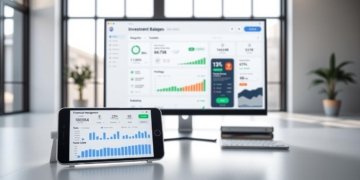Can you still get reliable results from A/B testing when your website has minimal visitors? Many marketers assume small audiences make meaningful experiments impossible. Yet experts like Bryan Eisenberg and Rich Page prove otherwise.
Eisenberg defines low traffic as fewer than 5-10 conversions weekly, while Page sets the threshold at under 1,000 visitors. At these levels, achieving statistical significance becomes tough—especially with a 5% baseline conversion rate. A 10% uplift might take months or years to confirm.
However, solutions exist. Eisenberg recommends capping tests at six weeks, while Page suggests focusing on radical changes. Tools like duration calculators help estimate feasibility. The key? Prioritizing micro-conversions and high-impact variations.
Key Takeaways
- Low-traffic sites face challenges in reaching statistical significance quickly.
- Experts recommend testing windows of six weeks or less.
- Radical design changes often yield clearer results.
- Micro-conversions provide measurable insights faster.
- Calculator tools help estimate required test durations.
What Is Considered Low Traffic for A/B Testing?
Low-traffic thresholds vary based on industry benchmarks and testing goals. Experts define it differently: Bryan Eisenberg focuses on conversion volume (5–10/week), while Rich Page uses visitor counts (under 1,000/week). Both metrics highlight challenges in reaching statistical significance quickly.
Expert Definitions of Low-Traffic Websites
Eisenberg’s conversion-based approach suits e-commerce, where actions matter more than visits. Page’s visitor threshold applies broadly, like SaaS or content sites. For example, a 5% conversion rate with four variations may need 3+ months to confirm a 10% uplift.
Why Traffic Volume Matters for Statistical Significance
Higher traffic reduces noise in data. A 5% vs. 5.5% CR difference requires ~15,000 visitors for 95% confidence. Smaller sample sizes extend test durations, risking external factors skewing results.
Extended tests face diminishing returns. TechCrunch data shows detecting a 1% CR difference takes 4x longer than a 5% difference. For limited traffic, radical changes or micro-conversions yield clearer insights faster.
Challenges of Running A/B Tests with Low Traffic
Limited visitor volume creates unique hurdles for marketers aiming to validate A/B test results. Smaller datasets increase variability, making it harder to distinguish meaningful trends from random fluctuations. Technical factors like page load delays further skew outcomes—KISSmetrics found a 40% abandonment rate when pages take over 3 seconds.
Long Test Durations and Inconclusive Results
With 500 monthly conversions, even a 10% uplift may require 60+ days to reach statistical significance. Extended timelines risk external factors—seasonal trends or algorithm updates—distorting data. For B2B sites with longer sales cycles, tests often exceed practical decision-making windows.
Underpowered tests also invite false positives. A/B platforms like VWO show confidence intervals widen with smaller sample sizes, increasing the chance of misinterpreting noise as improvement. Organizational pressure to act on preliminary data compounds this risk.
The Sample Size Dilemma
Calculating minimum sample sizes is critical. For 95% confidence in detecting a 5% conversion rate change, you’d need ~15,000 visitors—a challenge for sites averaging under 1,000 weekly. B2C brands face steeper odds, as their higher traffic volumes still demand radical changes to achieve timely results.
Tools like AB Test Guide’s calculator reveal stark tradeoffs: halving the required confidence level (e.g., to 90%) reduces sample needs but raises error risks. Balancing rigor with feasibility becomes paramount when traffic is scarce.
How to Run A/B Tests with Low Traffic: Core Strategies
Marketers with limited website visitors need smarter testing approaches to uncover actionable insights. Unlike high-traffic sites, small samples demand prioritization of experiments with the highest potential impact. Focus on bold variations and measurable micro-conversions to shorten learning cycles.
Prioritize High-Impact Changes Over Minor Tweaks
Subtle adjustments like button colors rarely move the needle for low-traffic sites. A rehabilitation facility achieved a 220% lift by redesigning their homepage to emphasize trust signals—testimonials and certifications—instead of testing minor CTAs. Similarly, an e-commerce brand boosted paid search revenue by 85% through theme-based testing (e.g., minimalist vs. feature-rich layouts).
Radical changes create clearer signal-to-noise ratios. Replace pricing sliders with fixed plans or overhaul navigation structures. These shifts generate faster results than incremental tweaks when sample sizes are constrained.
Focus on Micro-Conversions to Accelerate Insights
Track smaller actions—newsletter signups or video views—that correlate with macro-goals. Kellogg Business School’s survey methodology revealed a 3:1 ratio between micro- and macro-conversion rate improvements. Heatmaps and session recordings (via tools like Usertesting.com) identify friction points for optimization.
For example, moving a contact form above the fold increased demo requests by 40% for a SaaS company, detectable within two weeks. Micro-metrics provide quicker validation when full-funnel test data takes months to accumulate.
Leverage Micro-Conversions for Faster Results
Smaller actions can reveal big insights when full-scale conversions are hard to measure. For sites with limited traffic, tracking micro-interactions—like scroll depth or button clicks—provides faster, directional results while waiting for macro-goals (e.g., purchases) to accumulate.
![]()
Examples of Effective Micro-Conversions
Prioritize actions that correlate with ultimate goals. An eCommerce site might track add-to-cart rates, while a B2B SaaS tool monitors demo request forms. For content sites, 30% scroll depth often predicts engagement.
Google Analytics goal flow reports help visualize these relationships. A health tech brand found users who downloaded a lead magnet were 3x more likely to convert—making downloads a leading indicator.
Calculating Macro-Conversion Impact
Use proportional lift models to estimate how micro-improvements affect final conversion rates. If 50% of users who click pricing FAQs later sign up, a 10% uplift in FAQ clicks could drive a 5% macro-lift.
A spreadsheet template simplifies these calculations. Input your micro-to-macro ratios (e.g., 1 demo request = 0.2 paid conversions) to forecast impact before committing to full-scale tests.
Test Bold, Radical Changes
Testing extreme variations delivers clearer signals in low-volume environments. Unlike high-traffic sites that can detect subtle differences, smaller audiences require stark contrasts to achieve statistical significance within practical timelines.
Consider Apple’s product pages versus a generic fruit stand. The distinct visual hierarchy creates immediate impact—a principle that applies to website experiments. Radical redesigns of headers or value propositions often show effects within weeks.
Why Drastic Variations Yield Quicker Significance
Major changes create measurable gaps in user behavior. A luxury retailer tested free shipping guarantees against exclusivity messaging. The latter lifted conversion rates by 37% in 18 days—detectable despite having just 800 weekly visitors.
Session replay analysis reveals why. Users spent 22% more time engaging with radical redesigns that altered information architecture. This creates binary outcomes that are easier to measure than incremental improvements.
Balancing Learnings with Speed
Radical tests follow a validation checklist:
- Prioritize above-the-fold elements first
- Limit variants to maximize sample concentration
- Set shorter review cycles (2-3 weeks)
A clothing brand validated this approach by testing premium pricing against scarcity messaging. The radical price increase outperformed by 29%, proving counterintuitive results emerge faster with bold moves.
Hypothesis template for radical tests: “Changing [element] to [radical alternative] will increase [metric] by [X]% because [behavioral reason].” This framework ensures measurable objectives before launching experiments.
Optimize Test Design for Low Traffic
Strategic test design becomes critical when working with limited visitor data. Constrained traffic pools require frameworks that maximize impact per experiment while minimizing noise. Tools like VWO’s site-wide URL patterns help concentrate samples, but structural choices matter equally.
Stick to A/B Tests (Avoid Multivariate)
Multivariate testing demands larger samples to isolate variable impact. For sites under 50 conversions weekly, A/B tests deliver actionable results faster. A SaaS company reduced test duration by 60% after switching from MVT to A/B, focusing solely on headline versus hero image tests.
Google Optimize’s variation limits reinforce this: two variants reach statistical significance 3x faster than four. Template-level changes (e.g., checkout flows) also outperform page-level tweaks by reducing fragmentation.
Limit Variations to Two
Every additional variant splits your traffic, delaying conclusive outcomes. Split.io’s account targeting feature shows two variations achieve 80% confidence intervals 40% faster than three. A fintech brand validated this by testing only a radical redesign against their control, cutting analysis time from 12 weeks to 5.
Use a serial testing roadmap:
- Phase 1: Test layout (1 vs. 2 columns)
- Phase 2: Refine winning layout with copy variants
- Phase 3: Optimize CTAs
This staged approach prevents confidence interval stacking while maintaining rigor.
Use Sequential Testing as an Alternative
Sequential testing offers a smarter way to validate experiments when traffic is limited. Instead of running concurrent variants, this approach staggers test phases to concentrate samples and reduce external noise. Retailers using this method see 28% faster decision cycles according to Baymard Institute benchmarks.
How to Implement Sequential A/B Tests
Structure tests in weekly phases matching traffic patterns. A Monday-Saturday identical day comparison ensures consistent visitor behavior. For example:
- Week 1-2: Control version (original layout)
- Week 3-4: Variant A (redesigned header)
- Week 5-6: Variant B (simplified form)
Google Analytics 4 comparative date ranges help isolate performance shifts. This prevents holiday season traffic skews from distorting results.
Mitigating External Factors
Segment traffic sources to control for variability. Paid campaigns and email blasts should run separately from organic tests. Economic events like tax seasons require compensation models—adjust confidence intervals by 15-20% during volatile periods.
Maintain a PR blackout checklist to pause tests during major announcements. Session replay tools verify whether external influences affected user behavior before analyzing results.
Adjust Statistical Significance Thresholds
Statistical thresholds aren’t one-size-fits-all—especially when data is scarce. While the standard 0.05 level works for high-traffic sites, smaller experiments often need adjusted benchmarks to deliver actionable results. Financial institutions might demand stricter standards than media sites, where faster iteration creates competitive advantage.

When to Accept Higher Risk (0.10 Threshold)
The 0.10 risk threshold accelerates learning when sample sizes are limited. E-commerce brands testing seasonal layouts often use this approach—a 12% conversion lift at 90% confidence beats waiting months for 95% certainty.
Consider these scenarios for relaxed thresholds:
- Exploratory tests on new page templates
- Micro-conversion optimizations
- Time-sensitive campaign variants
Rigorous vs. Exploratory Tests
Critical funnel pages demand traditional 0.05 standards. A mortgage lender’s application form requires more statistical significance than a blog’s newsletter signup. Segment tests by potential impact—high-stakes decisions justify longer validation cycles.
Bayesian methods help balance speed and certainty. Unlike frequentist approaches requiring fixed sample sizes, they update probabilities continuously. Tools like Google Optimize’s Bayesian calculator show real-time confidence levels.
Threshold decision checklist:
- Financial consequences of false positives
- Test duration constraints
- Historical data variability
Expand Traffic Sources Temporarily
Temporary traffic expansion offers a solution for data-hungry testing scenarios. When natural visitor volume is insufficient, injecting targeted paid or email traffic can sharpen results without compromising long-term strategies.
Paid Campaigns and Email Traffic
Facebook and Google Ads provide controlled traffic bursts. Allocate 15–20% of monthly ad budgets to experiments, focusing on high-intent keywords. UTM parameters ensure clean data segregation in GA4.
Email lists deliver qualified user segments. Rotate segments weekly to prevent fatigue—prioritize inactive subscribers first. A/B subject lines (e.g., benefit-driven vs. urgency-based) double as mini-test opportunities.
Segmenting Traffic for Accurate Analysis
Create filtered GA4 views for each traffic source. Exclude retargeting pools to measure pure incrementality. Campaign calendars align tests with traffic spikes, avoiding holiday distortions.
Key segmentation tactics:
- Product-focused ads for pricing page tests
- Dedicated email flows for checkout experiments
- Geo-targeting to isolate regional ideas
Combine Quantitative and Qualitative Data
Blending numerical metrics with behavioral observations unlocks deeper testing insights. While conversion rates show what happened, session recordings and surveys reveal why users took specific actions. This dual approach compensates for limited data volume by uncovering patterns numbers alone can’t detect.
Heatmaps and Session Recordings
Testing tools like Hotjar and CrazyEgg visualize interaction patterns through scroll depth maps and click tracking. Hotjar excels at capturing mobile user behavior, while CrazyEgg offers superior segmentation for desktop analysis.
Scroll heatmaps identify content engagement thresholds. A SaaS company discovered 72% of users never saw their pricing table below 1200px, prompting a layout redesign. Session replays further expose friction points—like form fields causing 40% abandonment rates.
Customer Surveys and Usability Tests
Embedded 1-2 question surveys via Usertesting.com capture direct feedback during sessions. A/B testing different questions (“What nearly stopped you?” vs. “What convinced you?”) yields distinct insights. Emotion coding frameworks categorize responses into frustration/confidence metrics.
Structured usability tests follow scenario templates:
- Mobile users complete checkout in under 90 seconds
- First-time visitors locate contact information
- Returning customers apply discount codes
These methods transform abstract data into actionable improvements. A travel site increased conversions by 18% after observing users struggling with date selection—a pain point hidden in quantitative metrics.
Tools to Calculate Test Duration and Sample Size
Accurate duration and sample size calculations separate actionable tests from wasted efforts. Specialized testing tools like VWO’s calculator and AB Test Guide provide data-driven estimates for achieving statistical significance with limited traffic.
VWO and AB Test Guide Calculators
VWO’s tool requires three inputs: baseline conversion rate, minimum detectable effect (MDE), and desired confidence level. For a 5% CR aiming at 10% uplift with 95% confidence, it projects a 6-week test duration for 800 visitors/day.
AB Test Guide adds traffic segmentation features. Its visual dashboard shows how reducing MDE from 10% to 5% quadruples required sample size. Both tools export API-ready JSON for integration with analytics platforms.
Interpreting Results with Confidence
Bayesian calculators update probability displays in real-time, while frequentist tools like Optimizely show fixed results thresholds. For sequential monitoring, adjust confidence intervals weekly as data accumulates.
Key interpretation guidelines:
- Prioritize directional trends over absolute values in early phases
- Flag false positive risks when confidence crosses 80%
- Use MDE optimization to balance speed and reliability
These testing tools transform abstract statistics into clear timelines, helping teams allocate time and resources effectively.
Conclusion
Small audiences can still drive big wins with the right tactics. Prioritize bold variations—like layout overhauls—to create measurable gaps in user behavior. These deliver clearer signals than incremental tweaks.
Micro-conversions offer a practical way to validate ideas faster. Track clicks, scroll depth, or form starts while macro-goals accumulate. Tools like VWO’s calculator help estimate test durations upfront.
Start with structured experiments. Trial radical changes first, then refine. Combine quantitative results with session recordings for deeper insights. Even with limited traffic, iterative learning beats waiting for perfection.
Ready to optimize? Try testing tools or consult CRO experts to tailor strategies for your audience.
FAQ
What qualifies as low traffic for A/B testing?
Websites or apps with fewer than 10,000 monthly visitors often struggle to achieve statistical significance quickly. If changes take weeks or months to validate, you likely have low traffic.
Why does low traffic make A/B testing difficult?
Smaller sample sizes increase uncertainty. Without enough data, minor improvements may not show measurable impact, leading to inconclusive test results.
How can micro-conversions help in low-traffic tests?
Tracking smaller actions (like clicks or sign-ups) instead of final conversions provides faster insights. These micro-conversions often require less data to detect meaningful differences.
Should I test radical changes with limited traffic?
Yes. Bold variations (like redesigned layouts) create clearer performance gaps, making it easier to reach statistical significance compared to subtle tweaks.
Can sequential testing replace traditional A/B tests?
Sequential methods analyze data in stages, allowing early stops if results are clear. This reduces the time needed but requires careful implementation to avoid false positives.
What tools help calculate test duration for low-traffic sites?
VWO, AB Test Guide, and Google Optimize offer calculators. Input your baseline conversion rate and expected lift to estimate required sample size and test length.
How does qualitative data complement low-traffic A/B tests?
Heatmaps, session recordings, and user feedback reveal why changes succeed or fail. This reduces reliance on pure quantitative data when traffic is limited.
Is lowering statistical significance thresholds risky?
Accepting a 90% confidence level (vs. 95%) speeds up tests but increases false positives. Use this for exploratory tests, not critical business decisions.
Can paid traffic boost A/B test reliability?
Temporarily increasing visitors via ads or email campaigns helps gather data faster. Segment this traffic separately to avoid skewing organic performance metrics.
Why avoid multivariate tests with low traffic?
Testing multiple variations simultaneously divides your audience further. Stick to simple A/B tests for clearer, faster results.






